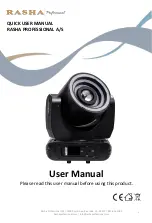
A C T G L O B A L . C O M / S P O R T S - T U R F
|
E M A I L :
S P O R T S @ A C T G L O B A L . C O M
MAINTENANCE MANUAL
18
If the paint stubbornly adheres to the turf, take the follow-
ing additional steps:
Repeat steps as above. Blast or fracture the paint loose
with hot water from an industrial high pressure hot water
sprayer. Set the water temperature at 150 degrees F. Do
not spray the water at “point blank” range – keep the
wand at least 30cm from the turf. Use 10 gallons of hot
water per minute and a water pressure of no more than
21 kg/cm squared. No solvent is required.
Wet vacuum the residue and water or immediately flood
the field.
Rinse the area thoroughly with lots of water and pick
up rinse water rapidly to avoid unsightly spots or paint
residue.
LOAD LIMITS
If proper steps are taken, almost any requirement can be
accommodated, but certain precautions are necessary.
Protection of the shock-absorbing underpad of the playing
surface is especially important. Underpads are composite
materials that contain nitrogen gas in numerous closed
cells. Over extended periods of excessive compression,
some of the nitrogen can diffuse through the cell walls,
resulting in a marginal loss of volume. The cell walls
themselves are not affected unless the overload is severe
enough to cause separation or rupture.
As a general rule, no long term static load of more than 3
psi (300 lbs./sq.ft), nor any transient rolling load of more
than 30 psi be applied to any Act Global surface (foam
pad or elastic layer underpad). Rolling loads of up to 30
psi are acceptable on an occasional basis. (The loading
of a pneumatic-tired vehicle is approximately equal to the
air pressure in its tires.)
It is good practice to eliminate any unnecessary long-term
static loads. Sheets of ¾ inch exterior plywood or pieces
of 2 x 10 lumber may be used to spread major static
loads and thus minimize the risk of damage to the turf
system. NOTE: Under static loads, the surface should first
be covered with a load spreader such as polyethylene
sheeting to keep it clean. New plywood may contain mate-
rials that will leach out and stain the turf if it is exposed
to water therefore a polypropylene barrier should be used
under the plywood to prevent this from happening.












































